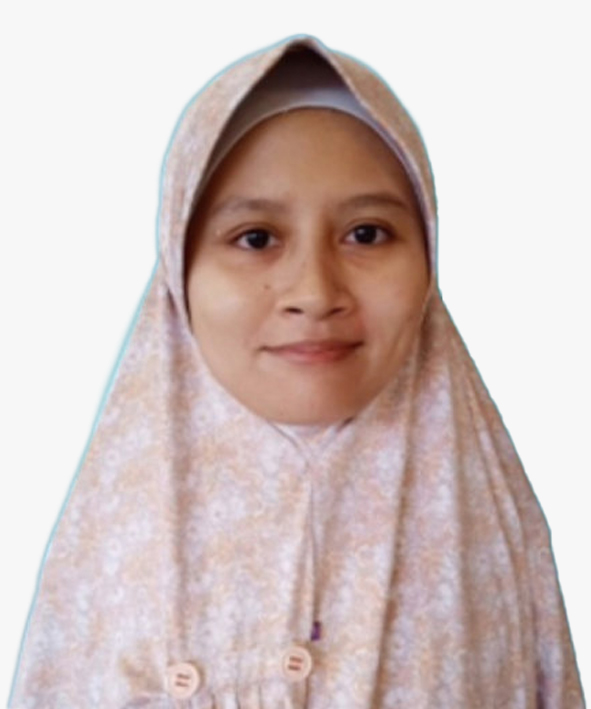The Effect of Anxiety Sensitivity to Loneliness in Hospitalized Children and Adolescents: Multidimensional Models
Introduction: Although good quality social relationships are essential for every individual’s mental and physical health and well-being, loneliness is an important yet often overlooked social determinant of child and adolescent health. Loneliness felt by a person can put them at risk of anxiety. Anxiety sensitivity is a sensation of fear that will result in physical, social, or psychological problems that later risk clinical anxiety problems. This study aims to determine the effect of anxiety sensitivity on loneliness in children and adolescents who are hospitalized in the hospital. Method: The type of research is quantitative research with an exploratory approach and a self-rating questionnaire. The research subjects were 20 respondents, who were inpatients at the West Java Provincial Mental Hospital. Anxiety was measured using the ASI - 3 (Anxiety Sensitivity Indexes - 3) questionnaire, and the UCLA Loneliness Scale 3 to assess the degree of loneliness. Data were analyzed using simple linear regression with the help of the EPI INFO 7 program. Results: The linear regression test obtained a regression coefficient of 0.786 which states the direction of the influence of variables X and Y is positive with a p-value of 0.000155 <0.05. Conclusion: There is a significant relationship between high anxiety sensitivity and feelings of loneliness in children and adolescents in inpatients. The most experienced dimension of anxiety sensitivity is about social problems while the dominant dimension of loneliness with the choice is always on the dimension of collective connectedness.
Keywords: Anxiety Sensitivity, Loneliness, Children and Adolescents
Introductions
Good quality social relationships are essential for the mental and physical health and well-being of every individual, loneliness is an important but often overlooked social determinant of child and adolescent health.[1][2]. Loneliness can be experienced by anyone, including children and adolescents. WHO (World Health Organization) reports the prevalence of loneliness in adolescent patients (12-18 years) in 28 studies in 76 countries, namely the prevalence of loneliness at 9.2% in Southeast Asia to 14.4% in the Eastern Region. In Indonesia, from May 2020 to June 2021, there were 5,211 participants from 6 provinces in Java and 28 provinces outside Java. According to the survey results, 98% felt lonely, with the majority being teenagers aged 18-24 years.[3]
On April 11, 2023, the researcher conducted preliminary interviews with two stable pediatric patients who were admitted to the West Java Provincial Mental Hospital; from the results of these preliminary interviews, it was found that both patients experienced loneliness. The first patient experienced loneliness and felt that he did not have a friend who could ask for help, and when he was hospitalized, the patient felt that he was not close to other patients. The same thing was felt by the second patient who felt that he did not fit in with the people around him and often felt that no one knew the patient well, based on the patient's statement, this arose because he missed his parents so the feeling of loneliness experienced had the impact of being sleepless, sad and feeling anxious.
Loneliness felt by someone can be at risk of experiencing anxiety[4],[5]. Anxiety sensitivity is a sensation of anxiety that will result in physical, social, or psychological problems that will later risk clinical anxiety problems[6],[7]. Longitudinal studies also found that loneliness predicts an increase in the severity of these symptoms over time suggesting the role of loneliness in their development and maintenance[8]. Little is known about how anxiety sensitivity can interact with physiological modulation to predict feelings of loneliness in children who have anxiety sensitivity[2],[9]. Findings in previous studies provide clear evidence of the relationship between anxiety sensitivity and loneliness; as expected, lonely groups have higher anxiety sensitivity than normal or socially attached groups[10],[11]. In the current investigation, the researcher chose the feeling of loneliness that is often suffered by children as a modulator that will be connected between anxiety sensitivity in children and adolescents[9],[12].
Based on the phenomenon that has been described, researchers feel it is important to conduct research on the effect of anxiety sensitivity on loneliness in children and adolescents.
Methods
Participants This research sample uses nonprobability sampling techniques, namely purposive sampling. This technique uses a sample selection technique to determine certain criteria. The reason this technique is used is because not all samples have criteria that match the phenomenon under study. The study sample was a convenience sample composed of 20 participants (80% male). All participants were inpatients specializing in children and adolescents with an average age of 17 years (60%) (minimum = 19 Years (5%). The number of participants was calculated using the Slovin formula based on the average number of visits to the emergency department and outpatient clinic who were hospitalized during the last four months (January, February, March, and April 2023). The average length of hospitalization for patients was 12 days.
Instruments
Sociodemographic Questionnaire It included variables such as gender, age, and length of hospitalization.
UCLA Loneliness is measured using the UCLA Loneliness Scale version 3, which is one of the most widely used measuring instruments in detecting feelings of loneliness[13],[14]from Ruslan (1996), which consists of 20 items where 11 items are favorable items and 9 items are unfavorable items. The unfavorable items, namely item numbers 1, 5, 6, 9, 10, 15, 16, 19, and 20 reflect individual satisfaction with their social relationships. Conversely, favorable items, namely item numbers 2, 3, 4, 7, 8, 11, 12, 13, 14, 17, and 18 reflect individual dissatisfaction with their social relationships. Loneliness in this study can be seen from the following dimensions: Isolation (UCLA 2, UCLA 3, UCLA 4, UCLA 7, UCLA 8, UCLA 11, UCLA 12, UCLA 13, UCLA 14, UCLA 17, UCLA 18), relational connectedness (UCLA 10, UCLA 15, UCLA 16, UCLA 19, UCLA 20), and collective Connectedness (UCLA 1, UCLA 5, UCLA 6, UCLA 9). The score range is 0 - 72, 54 - 72 with high anxiety sensitivity, 53 - 36 with moderate anxiety sensitivity, 35 - 18 with low anxiety sensitivity, and 17 - 0 with almost no anxiety sensitivity. The instrument has a reliability rate of 0.94[13],[15]and 0.89[14].
ASI -3 (anxiety sensitivity index 3) Anxiety sensitivity is measured using the anxiety sensitivity index 3 (ASI 3) instrument[16]which is an 18-item version of the anxiety sensitivity index, the anxiety sensitivity score is determined to predict the anxiety that will arise from anxiety behavior. Anxiety sensitivity is considered to be multidimensional, consisting of three factors: 1. Physical symptoms (e.g. I am afraid when my heart beats fast), 2. Cognitive dyscontrol (e.g. When I can't keep my mind on my thoughts, I am afraid: When I cannot keep my mind on a task, I worry that I might go crazy), 3. Social concerns (e.g. when I
N. Schmidt, N. Short, I. Stanley, N. Allan, and B. Albanese, The Cambridge Handbook of Anxiety and Related Disorders. Cambridge: Cambridge University Press, 2019.
C. Dunn and G. Sicouri, “The Relationship Between Loneliness and Depressive Symptoms in Children and Adolescents: A Meta-Analysis,” Behaviour Change, vol. 39, no. 3, pp. 134–145, Sep. 2022, doi: 10.1017/bec.2022.13.
D. L. Surkalim et al., “The prevalence of loneliness across 113 countries: Systematic review and meta-analysis,” The BMJ, vol. 376. BMJ Publishing Group, Feb. 09, 2022. doi: 10.1136/bmj-2021-067068.
J. Jaud, T. Görig, T. Konkel, and K. Diehl, “Loneliness in University Students during Two Transitions: A Mixed Methods Approach Including Biographical Mapping,” Int J Environ Res Public Health, vol. 20, no. 4, Feb. 2023, doi: 10.3390/ijerph20043334.
T. K. Papapanou et al., “Strong Correlations between Social Appearance Anxiety, Use of Social Media, and Feelings of Loneliness in Adolescents and Young Adults,” Int J Environ Res Public Health, vol. 20, no. 5, Mar. 2023, doi: 10.3390/ijerph20054296.
M. Elizabeth Loades et al., “Rapid Systematic Review: The Impact of Social Isolation and Loneliness on the Mental Health of Children and Adolescents in the Context of COVID-19,” 2020. [Online]. Available: www.jaacap.org
A. Ypsilanti, E. Mullings, O. Hawkins, and L. Lazuras, “Feelings of fear, sadness, and loneliness during the COVID-19 pandemic: Findings from two studies in the UK,” J Affect Disord, vol. 295, pp. 1012–1023, Dec. 2021, doi: 10.1016/j.jad.2021.08.031.
A. K. C. Chau et al., “The co-occurrence of multidimensional loneliness with depression, social anxiety and paranoia in non-clinical young adults: A latent profile analysis,” Front Psychiatry, vol. 13, Sep. 2022, doi: 10.3389/fpsyt.2022.931558.
R. W. Moeller and M. Seehuus, “Loneliness as a mediator for college students’ social skills and experiences of depression and anxiety,” J Adolesc, vol. 73, pp. 1–13, Jun. 2019, doi: 10.1016/j.adolescence.2019.03.006.
S. Madigan et al., “Changes in Depression and Anxiety among Children and Adolescents from before to during the COVID-19 Pandemic: A Systematic Review and Meta-analysis,” JAMA Pediatr, vol. 177, no. 6, pp. 567–581, Jun. 2023, doi: 10.1001/jamapediatrics.2023.0846.
M. W. Otto and J. A. J. Smits, “Anxiety sensitivity, health behaviors, and the prevention and treatment of medical illness,” Clinical Psychology: Science and Practice, vol. 25, no. 3. Blackwell Publishing Inc., Sep. 01, 2018. doi: 10.1111/cpsp.12253.
R. Narchal, “Loneliness and Anxiety Sensitivity: Understanding Behavioural Avoidance in the Lonely,” Acta Psychopathologica, vol. 03, no. 05, 2017, doi: 10.4172/2469-6676.100130.
D. W. Russell, “UCLA Loneliness Scale (Version 3): Reliability, validity, and factor structure,” J Pers Assess, vol. 66, no. 1, pp. 20–40, 1996, doi: 10.1207/s15327752jpa6601_2.
S. E. Auné, F. J. P. Abal, and H. F. Attorresi, “Modeling of the UCLA Loneliness Scale According to the Multidimensional Item Response Theory,” Current Psychology, vol. 41, no. 3, pp. 1213–1220, Mar. 2022, doi: 10.1007/s12144-020-00646-y.
I. H. Park, A. Rachmatullah, I. S. Park, and Y. Liu, “Assessment of the quality and generalizability of the revised UCLA loneliness scale in Chinese and Korean community-dwelling elderly populations using item response theory (IRT)-Rasch modeling and hybrid IRT-logistic regression,” Educ Gerontol, vol. 45, no. 10, pp. 581–599, Oct. 2019, doi: 10.1080/03601277.2019.1670908.
S. G. Farris, A. M. DiBello, N. P. Allan, J. Hogan, N. B. Schmidt, and M. J. Zvolensky, “Evaluation of the anxiety sensitivity index-3 among treatment-seeking smokers,” Psychol Assess, vol. 27, no. 3, pp. 1123–1128, Sep. 2015, doi: 10.1037/pas0000112.
B. T. Hilton et al., “Psychometric properties of the Anxiety Sensitivity Index-3 in adults with substance use disorders,” J Subst Abuse Treat, vol. 132, Jan. 2022, doi: 10.1016/j.jsat.2021.108507.
A. Pozza and D. Dèttore, “Psychometric Evidence of the Italian Anxiety Sensitivity Index-3 (ASI-3) in Patients with Anxiety Disorders and Psychosis,” Research in Psychology and Behavioral Sciences, vol. 3, no. 1, pp. 7–17, Mar. 2015, doi: 10.12691/rpbs-3-1-3.
R. K. McHugh, “Assessing anxiety sensitivity,” in The Clinician’s Guide to Anxiety Sensitivity Treatment and Assessment, Elsevier, 2019, pp. 9–29. doi: 10.1016/B978-0-12-813495-5.00002-4.
A. Horenstein, C. M. Potter, and R. G. Heimberg, “How does anxiety sensitivity increase risk of chronic medical conditions?,” Clinical Psychology: Science and Practice, vol. 25, no. 3. Blackwell Publishing Inc., Sep. 01, 2018. doi: 10.1111/cpsp.12248.
Copyright (c) 2024 Pebri Riansyah Claudio Lodra Malhotra, Lina Budiyanti

This work is licensed under a Creative Commons Attribution-ShareAlike 4.0 International License.
1. Copyright of this journal is possession of the Author, by the knowledge of the Editorial Board and Journal Manager, while the moral right of the publication belongs to the author.
2. The journal allows the author(s) to retain publishing rights without restrictions.
3. The articles are published under a Creative Commons Attribution Share-Alike (CC BY-SA) license. Many research funding bodies prefer the CC BY-SA license because it allows for maximum dissemination and re-use of open access materials. Users are free to share (copy, distribute, and transmit) and remix (adapt) the contribution under this license, including for commercial purposes, as long as they attribute the contribution in the manner specified by the author or licensor.




























